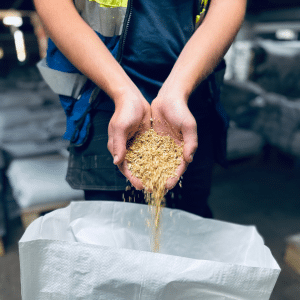Sustainable urban drainage systems (SuDS) have become increasingly popular in recent years with Wales leading the way, setting out legislation requiring a SuDS design/ consideration for any site with more than one building or a development area greater than 100m2. This indicates we are moving away from the traditional grey (hard engineering) approach to a more natural blue-green approach.
Blue-green infrastructure (BGI) is a network of natural and semi-natural flood risk management components such as green roofs, bioswales, restored urban rivers and rain gardens. These components not only contribute to flood risk management through attenuation of surface water but also provide wider benefits of green spaces through increased amenities and other associated social benefits.
In response to the increased recognition of BGI the blue-green cities research project was launched, this study looked at new strategies and ways urban flood risk could be managed using the BGI approach. The project concluded in 2016 and two reports (C780a and C780b) have recently been released, identifying the findings of the projects and lessons to be learnt.
The study identified the largest barrier to implementing BGI is not scientific uncertainty, but social and political understanding. Many perceive BGI approach to flooding risk management harder to deliver and more costly to maintain compared to the traditional grey approach which is not necessarily true. The research found that through increased awareness and education by involving stakeholders in the early stages of the design process and utilising the newly developed multiple benefit evaluation method of BGI resulted in more successful implementation of BGI.
So we know how to better implement BGI but why should we? This was the focus of the second report C780b. There are numerous reported benefits of BGI/ SuDS which include, among many other things, improved water quality. BGI aids water quality through the trapping of sediments including pollutants such as heavy metals. A key consideration in this second report was the use of modelling on a long term scale due to the components having a lifespan of over 25 years allow the features to evolve over time. The long term models provide the planners and designers with a better understanding of a proposed system to ensure an adequate level of protection against flooding is provided. Suspended sediment concentration is analysed within this report for multiple BGI methods, beginning the basis of information to aid in the incorporation of BGI into flood risk management schemes.
Following on from the recent Environment Agency statement on the need to change our approach to flood management, it is time that BGI and wider SuDS components are incorporated not only into new developments but also retrofitted into existing flood risk management schemes. As we look towards the future, it appears we are moving towards a brighter blue-green approach and away from the traditional grey approach that has dominated the UK’s flood management approach in the past.
Here at Envireau Water, we think differently about flooding. From our Flood Risk Assessments to identify risk, to resilience measures to reduce flooding to commercial and domestic developments, to actively supporting and aiding natural flood management techniques and SuDS incorporation into proposed or existing developments. Learn more about the work of our dedicated surface water team here, and get in touch on 01332 871 882 to see how we can help you.





